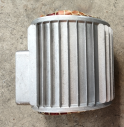


Understanding the Pulley Block System Mechanics and Applications
A pulley block is a fundamental mechanical device that has been utilized for centuries. It is an integral component in various systems where lifting heavy loads is required. The simplicity of the pulley block is what makes it so effective. It operates on the principles of mechanical advantage, allowing users to lift large weights with minimal force.
What is a Pulley Block?
At its core, a pulley block consists of one or more wheels (pulleys) that are mounted on an axle and enclosed within a frame. The most basic form features a single wheel, while more complex systems may include multiple wheels arranged in a block. The concept utilizes ropes or cables that run over the wheels, creating a system to exert force on objects.
When a force is applied to one end of the rope, it is transmitted through the pulley system, enabling the lifting of weight on the other side. The mechanical advantage provided by the number of pulleys used can significantly reduce the effort required to lift a load. For example, a block and tackle system featuring multiple pulleys can allow a person to lift a heavy object with only a fraction of the weight's force acting against them.
Mechanics Behind the Pulley Block
The efficiency of a pulley block is deeply rooted in the laws of physics
. The most critical concept is the mechanical advantage, which is calculated as the ratio of the load force to the effort force. The more pulleys in a system, the greater the mechanical advantage, leading to less effort needed to lift the load.
The ideal system is frictionless and does not account for the weight of the rope; however, real-world applications often introduce complexity. Friction between the rope and the pulley, as well as the weight of the rope itself, can reduce efficiency. Nonetheless, improvements in materials and design have led to innovations that minimize these inefficiencies.
Applications of Pulley Blocks
Pulley blocks find their applications in various fields, from construction and shipping to maritime operations and entertainment. In construction, pulley blocks are essential for lifting materials and equipment to great heights. They streamline the process, ensuring safety and efficiency on-site.
In shipping, crane systems equipped with pulley blocks allow for the easy loading and unloading of cargo from vessels. This is critical for maintaining operational efficiency within bustling ports. Similarly, in the entertainment industry, pulley systems are used to elevate lighting and stage equipment, enabling complex set designs and effects.
Maritime industries also rely heavily on pulley blocks. Sailors use them for adjusting sails and managing the rigging of boats, as they reduce the effort needed to control heavy lines. The principles of the pulley system continue to play a vital role in wooden tall ships and modern yachts alike.
Conclusion
The pulley block, though simple in design, illustrates the profound impact of mechanical engineering on our daily lives. Its ability to amplify force and facilitate motion has made it a timeless tool across various industries. Understanding how pulley blocks work not only enriches our appreciation for mechanical systems but also underscores the ingenuity that drives technology forward. As advancements continue, we can expect innovations in pulley systems that further enhance their capability and efficiency, ensuring they remain indispensable in our world.



